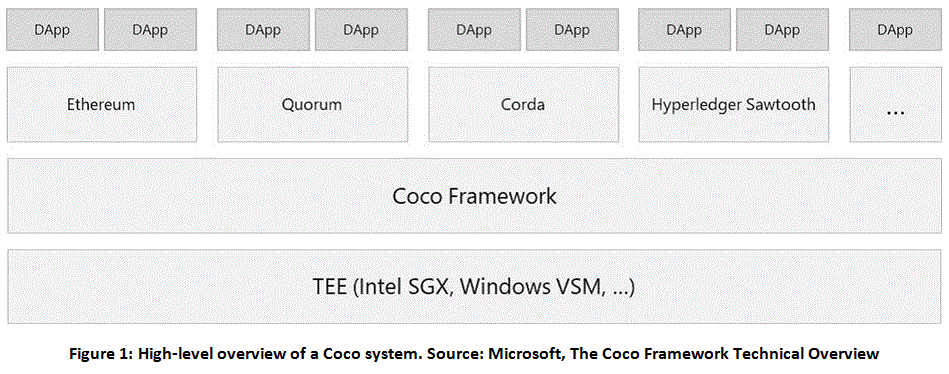Today, Microsoft announced the Confidential Consortium Framework, a technology that strives to make blockchain systems quicker and more secure. So far, Coco implementations will include Ethereum, R3 Corda, Intel’s Hyperledger Sawtooth, and JP Morgan’s Quorum.

On August 10, 2017, Microsoft Corporation (Microsoft) announced the Confidential Consortium (Coco) Framework, a blockchain protocol technology. The Coco Framework is not a blockchain itself and it is not tied to Azure, Microsoft’s cloud computing service.
Instead, Coco strives to provide the infrastructural foundation for blockchain networks. Using advanced algorithms and trusted execution environments (TEEs) – such as Intel Software Guard Extensions (SGX) or Windows Virtual Secure Mode (VSM) – the Coco Framework aims to meet the operational and security needs of enterprises. In early 2018, Microsoft plans to make Coco available on GitHub as an open source project.
“We expect this to be the foundation for blockchain for enterprise,” said Mark Russinovich, chief technology offer of Azure. Microsoft’s initial Coco Framework implementations include Ethereum (used in its prototype demonstration), R3 Corda, Intel’s Hyperledger Sawtooth, and JP Morgan’s Quorum.
According to the Coco Framework white paper, “enterprise-ready blockchains networks” will deliver many benefits including:
Throughput and latency approaching database speeds.
Richer, more flexible business-specific confidentiality models.
Network policy management through distributed governance.
Support for non-deterministic transactions.
Reduced energy consumption.
Microsoft boasts that Coco-enabled blockchain networks can achieve transactions speeds in excess of 1,600 transactions per second. The company also named Intel as “a key hardware and software development partner.”

Follow me on Twitter : https://twitter.com/CryptoFanFrance
